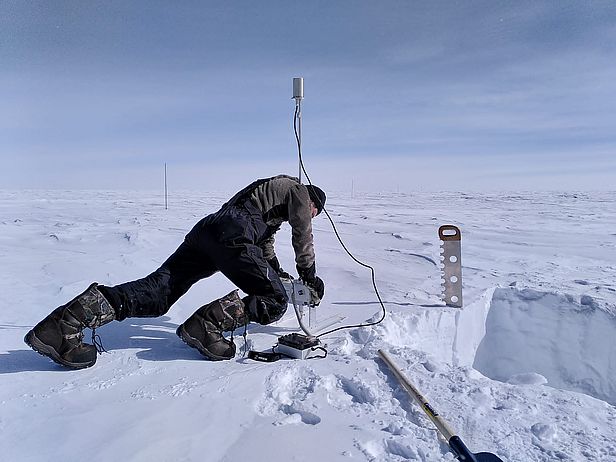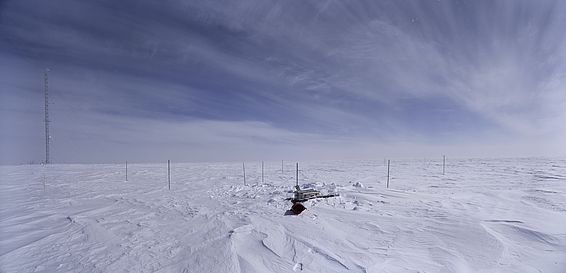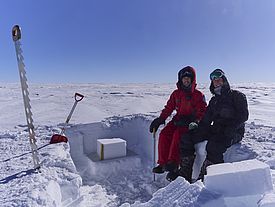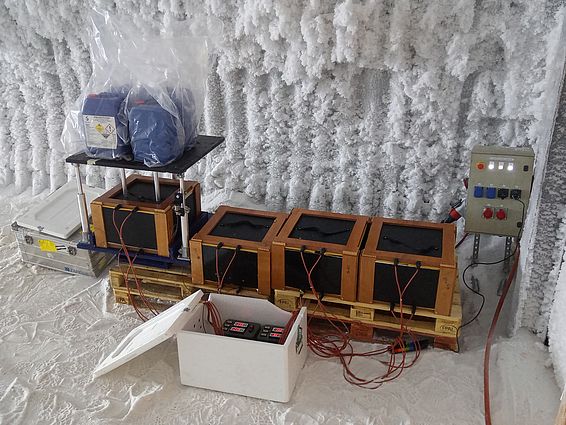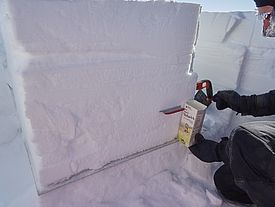28.12.2023 | Matthias Jaggi | SLF News
SLF technician Matthias Jaggi reports on his expedition to Antarctica. Part two: out of quarantine and ready to work.
After five long days, the Covid PCR batch test is scheduled for this morning. If it's positive, our group of four will remain in quarantine for another three days. If it's negative, it means that our much-anticipated work here at Dome C can get under way. So you can imagine how overjoyed we were to be given the all-clear by radio. More days in quarantine would have been tough. Supplies were starting to run low. I couldn't resist opening the Christmas present I'd been given by my work colleagues in Davos. From the feel, shape and sturdiness, it had to be a book. Sure enough, it turned out to be a crime novel, Bündner Irrlichter, which made my time in quarantine a lot more bearable. Also, the Swiss chocolate I'd brought with me was almost gone. So yes, it was definitely time for a change!
On regaining my freedom, the first thing I had to do was work out where everything was. The part of the luggage that should already have arrived was stored somewhere in the tents. With the help of scientific director Vito, I soon managed to track everything down and get it together. This time I'm staying in the “Spacca Ossa” or “bonebreaker” tent. So far I've been spared... The tent is divided, and only one part has a stove. That suits me just fine. I store the instruments in the warm area and for sealing the snow samples later I'll need a temperature of around −5°C anyway. Depending on which part of the tent I'm in and how far from the stove I am, I can have almost any temperature I want – provided I take the position of the sun into account. The “laboratory” workspace is now all set, but I also need an undisturbed test site…
Vito assigns me a spot in the “forbidden area”. This is situated on the side away from the wind (usually) and isn't contaminated by soot or other impurities. Also, the location of all activities is precisely logged to ensure that undisturbed snowpack is always available. So a day later I started shovelling, only to suddenly come across cracks at a depth of one metre. Obviously, my first thought was: these so-and-sos have assigned me a test site like Emmental cheese, full of cracks and small cavities. But the course of the snow layers around the cracks looked very natural, not at all as if snow had blown in or been shovelled back in. Feeling a little uncertain, I picked up the phone during my lunch break and called my retired ex-boss Martin Schneebeli. I hadn't quite got to grips with the time difference yet, so he was rather surprised to receive a call in the early hours of the morning – but hopefully also pleased to hear from me. He explained the phenomenon. When the snowpack cools down to −60°C in winter, the snow loses its plastic flow properties and behaves almost like an ordinary material. It contracts as it cools down, which inevitably results in some cracking. Reassured, I now simply avoid the cracks when profiling.
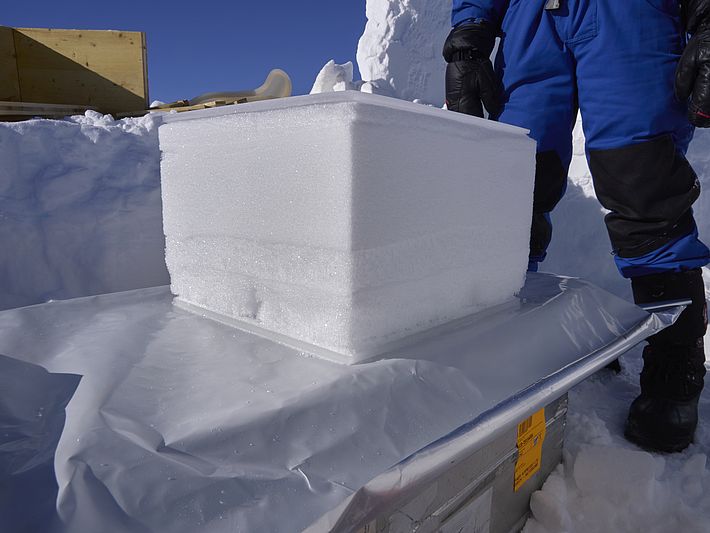
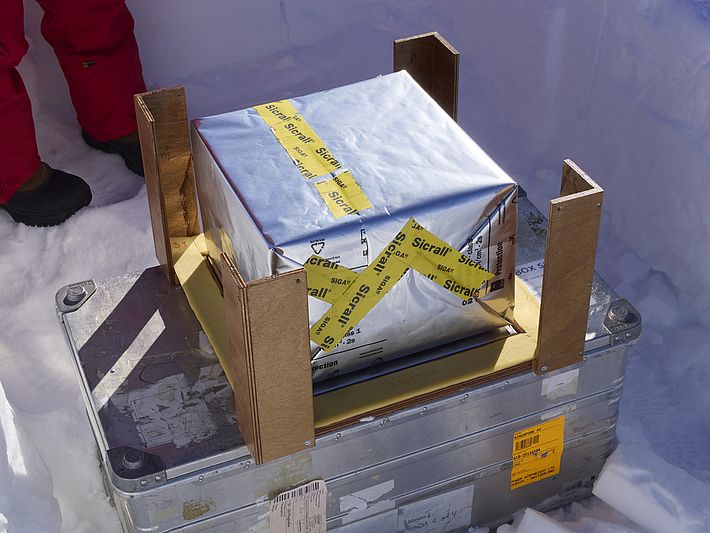
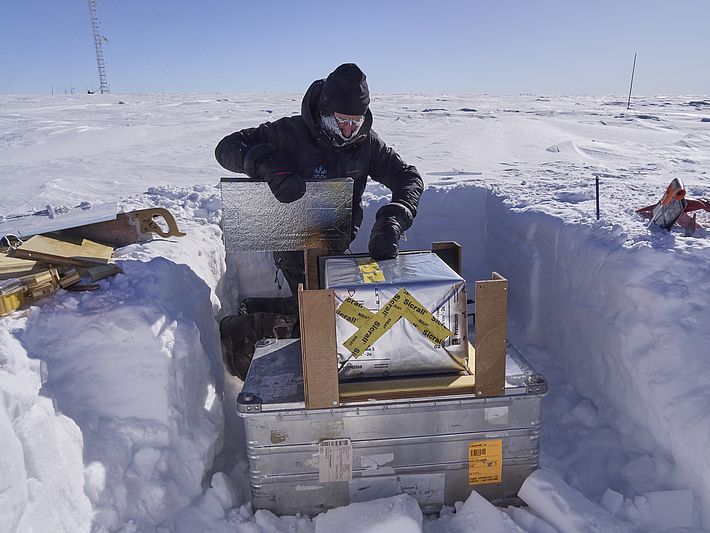
As mentioned in the first blog, we want to understand the influence of snow metamorphism on the redistribution of O-18 isotopes. The easiest way to do this is of course directly on the snow profile itself. This involves measuring both the snow microstructure and the associated isotope concentration at the beginning and end of the summer, and trying to understand the process based on the changes that have taken place in both. We will be doing that, but to make our lives a little easier, we're also cutting blocks (40 x 40 x 30 cm) out of the profile, packing them airtight in foil and allowing them to “incubate” in metamorphism boxes that we built ourselves, under simplified but temperature-equivalent conditions. The aim is to try to eliminate processes that could make it harder for us to interpret the experiment and understand what is going on. It's a twin-track approach, in other words: outside on a real profile with full physical complexity and under simplified conditions in our boxes.
As well as the very helpful and pragmatic logistics staff, I can always recruit volunteers from among my fellow researchers to help out with the shovelling – although usually on a one-off basis. Even so, I'm grateful to have someone at my side every day to help me lift the snow blocks out of the hole, pack them in the foil and tape the package shut. Doing it by myself would be practically impossible. First we have to remove the metamorphism boxes from the “forbidden area” by sledge, but then we switch to the snowmobile for the around two-kilometre journey to the EPICA underground ice core storage facility, where the experiment will take place.
We chose the EPICA facility because it remains at a constant temperature of −50°C. Since the metamorphism boxes can only heat, we need the ambient temperature to be colder than our target temperature. Because snow metamorphism occurs more slowly here in Antarctica than in the Alps due to the generally lower temperatures, the aim was to set up the experiment as quickly as possible and only dismantle it again shortly before my departure. Apart from the quarantine delay, I think I've managed that. Like a cheesemaker checking his wheels, I trudge over to my metamorphism boxes every day and adjust the temperatures according to the actual conditions in the snow profile.
After a physically demanding week in the snow profile, I now have to document the measurement data properly. Essentially, this means transferring the notes and measurements scribbled down in a field book into tables so that they can later be processed and evaluated automatically. “Reconstructing” the field-book notes also relies somewhat on memory. In wind chill temperatures of −50°C, with mittens on, you don't feel inclined to write a novel, but the memory is frighteningly volatile.
As soon as the rest of my luggage arrives, I can start to seal the snow samples that have already been taken from the profile and get them ready for shipping. Sealed snow samples will be sent to Davos in order to analyse their snow microstructure using X-ray tomography. Find out how that goes – and whether we've managed to celebrate Christmas – in the next blog.
